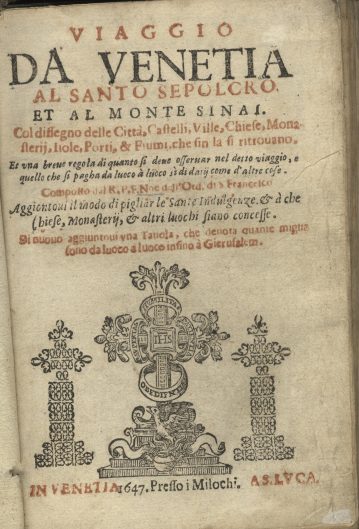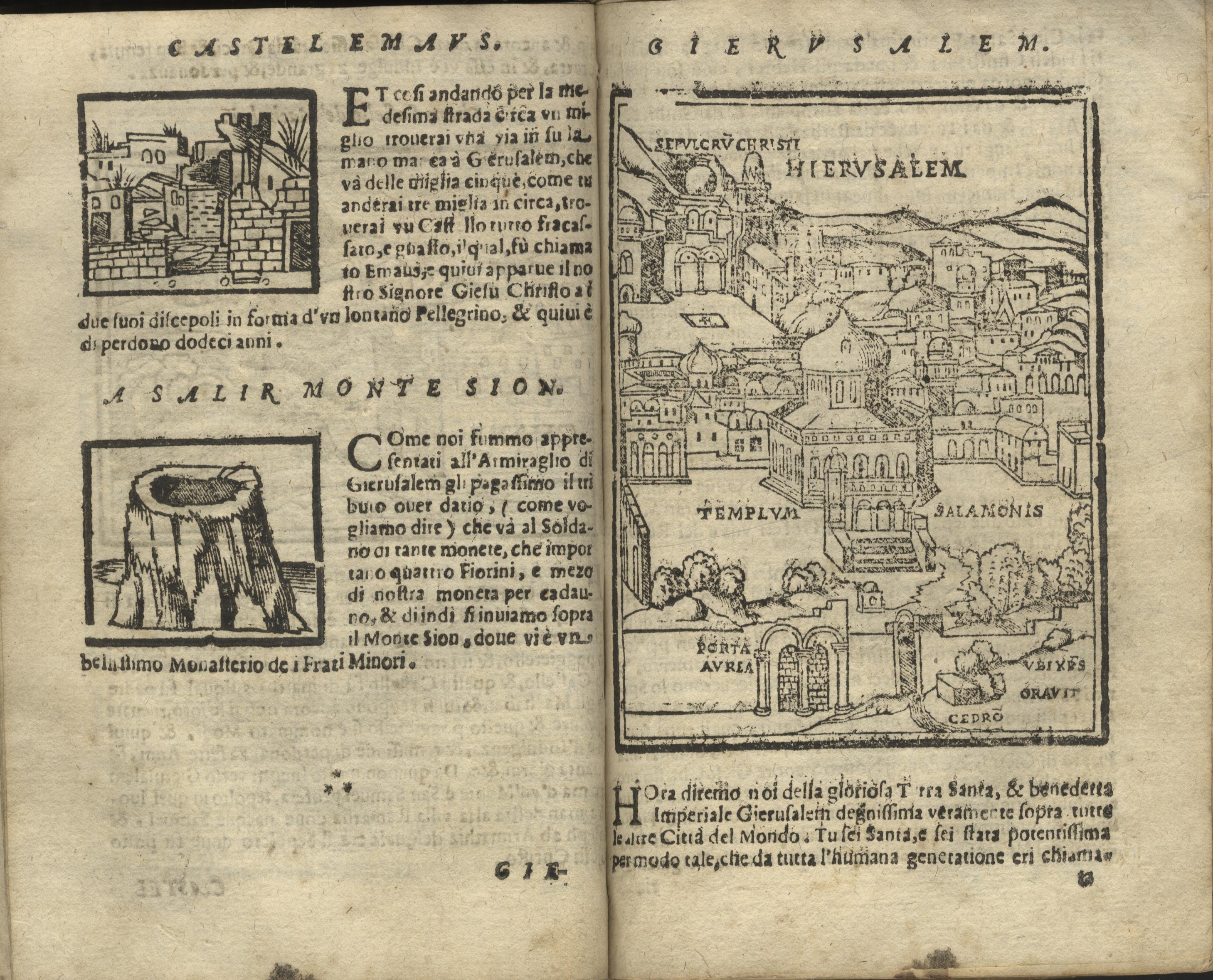Viaggio da Venetia al Santo Sepolcro et al Monte Sinai. Col dissegno delle Città, Castelli, Ville, Chiese, Monasterij, Isole, Porti, & Fiumi, che sin là si ritrovano. Et una breve regola di quanto si deve osservare nel detto viaggio, e quello che si paga da luoco a luoco, sì di Datj, come d’altre cose. Composto dal R. P. F. Noè dell’Ord. di S. Francesco. Aggiuntovi il modo di pigliar le sante indulgenze, & a che, Chiese, Monasterij, & altri luochi siano concesse. Di nuovo aggiuntovi una tavola, che dinota quante miglia vi sono da luoco a luoco insino a Gierusalemme.
Bianco Noe, Franciscan 17th century.
Synopsis
Not a lot is known about the author who travelled to Palestine before 1470. This work was considered for a long time as the only available guide to pilgrims to the Holy Land. Noe was inspired greatly by another Italian traveller Niccolo da Poggibonzi (1346 – 1350). The subjects illustrated include views of Italian & Middle Eastern cities, as well as zoological subjects. Some interesting depiction of Jerusalem can be found in this fine, compact book of a Venetian traveller and merchant. The miniature woodcuts illustrating the text show architectural and historical images of Jerusalem – such as Solomon’s Temple and the Church of the Holy Sepulchre – reproduced in simplified graphic forms.
A late edition. This work is one of the oldest Italian travel books, first printed in folio in 1500, an anonymous pilgrim’s handbook and guide to the Holy Land. The second edition appeared in small 8 vo. in 1518/1519, and the format of the work has remained unchanged since then, when the woodcuts of Corfu, Crete and Rhodes which occur in all subsequent editions first appeared. In the late 16th century the name of friar Neo Bianchi, whose guide to the Holy Land appeared in 1566 (q.v.), was somehow attached to this work. Possibly an unscrupulous publisher thought the work would sell better if a known author could be connected to it. The first edition which we have found (after examining editions of 1500, 1519, 1546, 55, 63 and 87) to contain the name Noe on the title is that of Lucca, 1600, and all subsequent editions are the same (e.g. 1609, 1640, 1647, 1680, 1728). The author of this anonymous guide also included accounts of Egypt and Mt Sinai, and the woodcuts also describe exotic plants and animals.
Bibliographic references: Blackmer for Bassano edition of 1734; Tobler 63. Röhricht p. 158. Graesse 1, 361 for 1537 edition; Brunet 1, 847 for 1604 edition.








